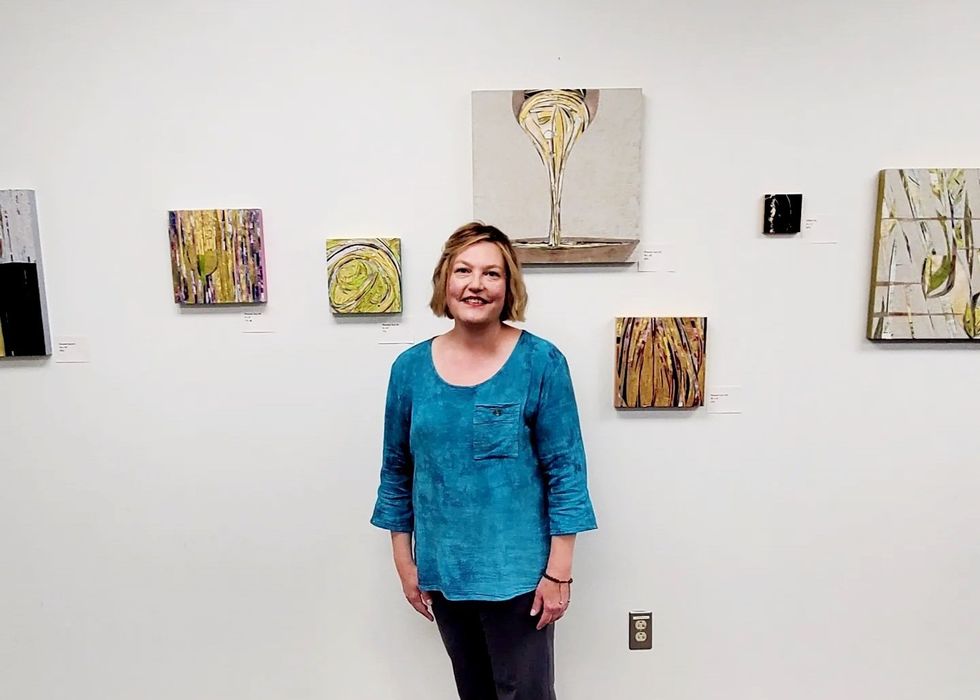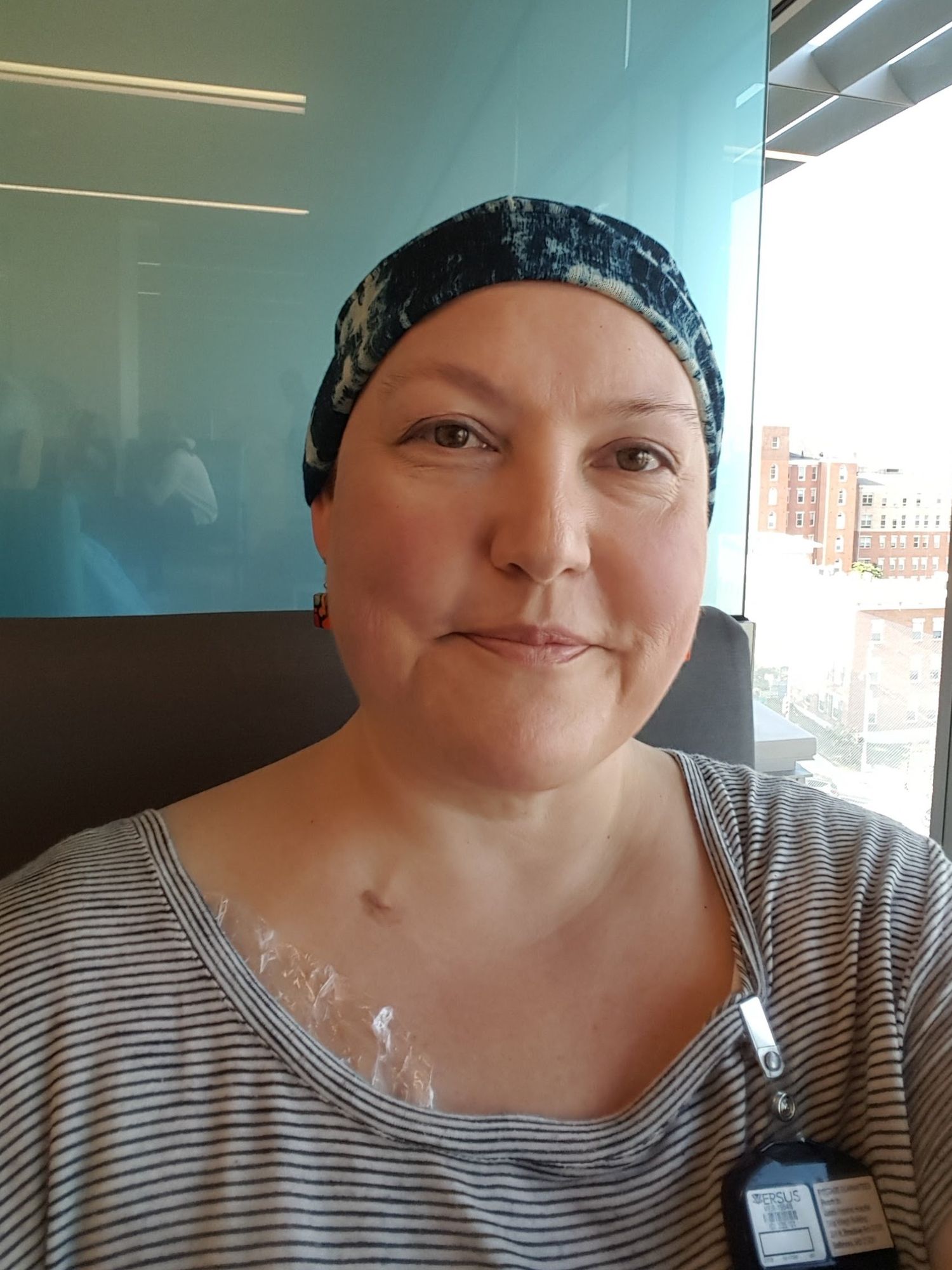As told to Nicole Audrey Spector
I was 48 years old when I felt sudden, stabbing pain in my lower right abdomen. The pain came and went, and I didn’t worry too much about it at first.
But one night, the pain got so bad I thought I was going to die. I had a high fever and was violently ill. My heart raced and sweat dripped off my shaking body.
I lived alone and I thought about calling an ambulance, but I ultimately decided to just get through the night. Eventually I fell asleep. The next morning, I made an appointment with my healthcare provider (HCP), who was able to see me right away.
When I arrived, the nurse practitioner took one look at me and recognized that something wasn’t right. She worried I might have had appendicitis, so she put me in an ambulance and sent me to the nearest hospital. There, I had a bunch of tests to figure out what was going on.
A CT scan and an MRI revealed a huge, possibly cancerous mass on my left ovary and a smaller, possibly cancerous mass on my right ovary. It appeared that movement of the mass on the left ovary was causing pain on my lower right side.
I remember looking at an image of the bigger mass and feeling out of my body. I kept thinking, “So this is how people find out they may have cancer?”
It may seem hard to believe, but I wasn’t afraid. Helping to conquer any fear was the quality of my care. The ER doctor treating me was respectful, easy to talk to and a great listener. He was in constant contact with my HCP, who promptly reviewed all the tests and referred me to an amazing OB-GYN, Dr. Stone.
Dr. Stone, I soon came to learn, was passionate about self-advocacy. Like my healthcare team in the ER, her team was fantastic, too. I was treated like an active participant in my own care rather than someone who was just getting care. I always felt like a trusted partner in the decisions surrounding my care and never had to fight to be heard.
There was no question that the ovary with the larger mass had to be surgically removed right away. But it wasn’t yet clear if the mass was cancer. This was important to know because it would guide next steps during the surgery. If the mass was cancer, I would need a
radical hysterectomy to remove my cervix, uterus, part of my vagina and nearby lymph nodes. Dr. Stone carefully explained everything to me beforehand, which allowed me to really think about what I wanted. I agreed to the procedure if necessary.
During the surgery, Dr. Stone’s team took a sample of the mass, froze it and then did a biopsy on the spot. The biopsy confirmed that I had ovarian cancer, and I had a radical hysterectomy immediately.
When I woke up from the surgery, my mother came in to break the news to me that I had ovarian cancer. She was devastated. But I was actually OK. I’d never married or had children, and I always thought that kind of life could be nice. But my mom taught me that being independent and on your own is not a lesser life than one with a husband and kids. It didn’t strike me as sad to lose my reproductive organs. If that’s what it took to get rid of the cancer, then that’s what we had to do.
I was able to have this peace because of my faith and trust in God. I didn’t pray to not have cancer, or even to not die. I yielded to his plan and love. That surrender helped me feel light and confident.
Shortly after the surgery, I learned I had made the right decision.
“You are going to recover 100%!” Dr. Stone told me.
Though the surgery was a success, my battle against cancer had only really just begun. Dr. Stone explained that because ovaries move, they can sprinkle microscopic cancer cells all through your abdominal cavity. I would need to have four months of chemotherapy to destroy them.

Chemo was tough — even tougher than I thought it would be. But I tried to have a positive attitude throughout. And there were actually some aspects of it that I found to be less traumatizing than I’d imagined. For example, I dreaded the idea of losing my hair, but I was proactive about it. I went to a local cancer resource center to get a free buzzcut and free wigs. I had so much fun trying on all those wigs! It was like being at Disneyland. I’d actually never been crazy about my natural hair. The wigs made me feel beautiful.
During chemo, I had to cut down on some of my responsibilities at work. My colleagues and community were amazingly supportive, and I shifted to part-time employment. At first, this was jarring. I’m an artist at heart, but I’d always put that part of myself to the side so I could prioritize my day job. But my experience with chemo helped me understand that I should be an artist first and an employee second.
Even after chemo was done and I was declared disease-free, I continued to deepen my relationship with myself as an artist. I ended up changing jobs and became a cancer self-management facilitator. Not only does the job fuel my passion for cancer advocacy work, it allows me more time to make art, which is what makes me happiest.
Cancer is horrible. That’s a fact. But in my experience, it can also be transformative. I can honestly say, thanks to God, an amazing medical team and the rise of my inner wisdom, that I am a better, more fulfilled human today than I was before cancer.
This resource was created with support from Merck.
Have a Real Women, Real Stories of your own you want to share? Let us know.
Our Real Women, Real Stories are the authentic experiences of real-life women. The views, opinions and experiences shared in these stories are not endorsed by HealthyWomen and do not necessarily reflect the official policy or position of HealthyWomen.
From Your Site Articles
Related Articles Around the Web
Credit : Source Post



